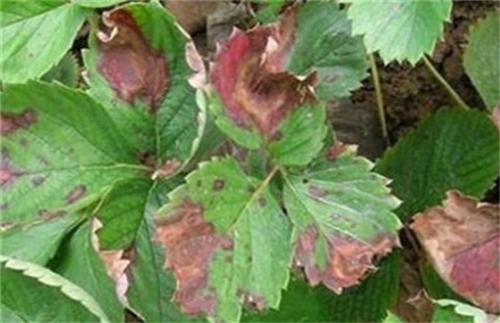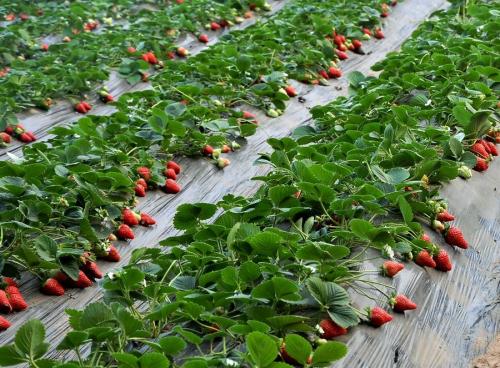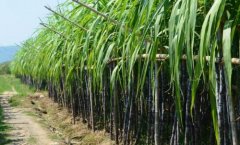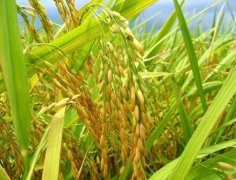Pictures and control methods of strawberry anthracnose, how about strawberry robust seedling cultivation techniques?
How to prevent and cure strawberry anthracnose? The Agricultural Experimental Institute of the Agricultural Commission of the Executive Yuan has successfully developed techniques for the cultivation of robust strawberry seedlings, which is different from potted strawberry planting. Let's take a look at it together.
The Agricultural Experimental Institute of the Committee of Agriculture of the Executive Yuan has successfully developed techniques and strategies for the cultivation of strawberry seedlings, which can be integrated into the existing cultivation models of farmers, which can not only improve the rate of healthy strawberry seedlings, but also reduce the replanting rate of Honda. It can actually improve the yield and quality of strawberries and increase the income of strawberry farmers.
Strawberry is an important cash crop in Taiwan. although the total area of domestic production is only about 550ha, and 90% of it is cultivated in Miaoli County, the total output value of fresh and processed fruits is more than 1.8 billion yuan because of low quantity and high price. If strawberry seedlings are planted on the basis of 4500 plants per plot, the total annual demand will reach 25 million plants. However, in recent years, due to the occurrence of strawberry anthracnose, strawberry seedlings are in short supply. Coupled with the abnormal climate, strawberries still have regular high temperatures (above 25oC) between October and November after strawberry transplanting in September, resulting in anthrax damage, underground bud crown gangrene, aboveground leaves withering and dying one after another. In order to make up for the lack of plants, the replanting rate is as high as 30% to 40%, resulting in a major crisis in the strawberry industry. It is urgent to solve the problem of strawberry anthracnose.

In the face of the challenge of anthracnose, the Agricultural Laboratory developed robust seedling cultivation techniques for strawberries. Firstly, tissue culture seedlings of strawberries without specific pathogens were used, combined with the application of microbial preparations to cultivate healthy strawberry seedlings. Then disinfect the cultivation medium with gas water heater, and sterilize the soil by flooding, adding organic matter and covering transparent plastic cloth. Finally, microbial agents were applied to the disinfected cultivation medium and soil, and beneficial microorganisms were first used to occupy the ecological areas where anthracnose could infect strawberries, so as to prevent the breeding and reproduction of anthracnose. In order to reduce the incidence of strawberry seedling infection after transplantation in the nursery and Honda.
The seedling survival rate of the untreated group in the demonstration Guanmotian area was 83.9%, and the survival rate of healthy strawberry seedlings cultivated by microbial preparation was increased to 95.1%. The replanting rate of strawberries in the untreated group was 37.6%, while that in the treated group decreased to 10.7%. The additional cost of using microbial agents per plot for 6 months is less than 1800 yuan, but the loss expenditure can be reduced by about 25300 yuan (including about 20500 yuan per plot for replanting strawberry seedlings and 4800 yuan for replanting wages). In addition, using microbial preparations to cultivate healthy strawberry seedlings so that strawberries can be planted in mid-September, other farmers who have not adopted this technology may not be able to plant strawberries until the end of October because of a shortage of transplanted seedlings or high temperatures, delaying the market opportunities for strawberry harvest.

- Prev

Introduction to the planting method and time of sugarcane, and what are the pre-measures for the planting mode of sugarcane seedlings?
The planting prospect of sugarcane is relatively good, do you know how to grow sugarcane? Do you want to know about it? Let's have a look! 1. Preparation of sugarcane seedlings in order to promote the rapid and neat germination of sugarcane seedlings and prevent the occurrence of important diseases, sugarcane seedlings were planted.
- Next

What are the four key points of rice seedling raising techniques? What materials are needed for the formula of rice seedling soil
Now rice is our most important food, and it is our staple food. How much do you know about the method of growing rice? Let's first take a look at the methods of raising rice seedlings. Seedling raising method 1. Compost one portion of seedbed soil with sawdust (each box weighs about 520 grams
Related
- The first cup of black tea in spring, the flavor and history of tea gardens in Kenya, Africa
- The computer can not only choose potatoes, but also grow tea rice. AI will grow winter oolong tea champion.
- It is not only the inflated tea bitten by insects, but also engraved with the four seasons tea in Beipu.
- The Oriental Beauty Tea Festival in Zhuxian County takes the stage at the weekend to experience the plus-size feast of oil tea.
- & quot; Oriental Beauty Tea & Exploration of Emei in Hsinchu, the hometown of quot;
- The new variety of strawberry "Tainong 1" dessert is the first choice with mellow aroma. Crimson gorgeous
- History of Tea in Taiwan: from Wild Inner Mountain to Export Tea Garden
- Two types of Taiwan Oriental Beauty Black Tea won the British three-Star Award for Childhood Tea Xiang Zhang Jiaqi changed from pilot to champion tea maker.
- Banana species and varieties: the planting history of Taiwan Xianren banana and dwarf banana is long, is banana disease resistant?
- Coffee planting Technology: Qianjie Coffee from Seedling to harvesting

